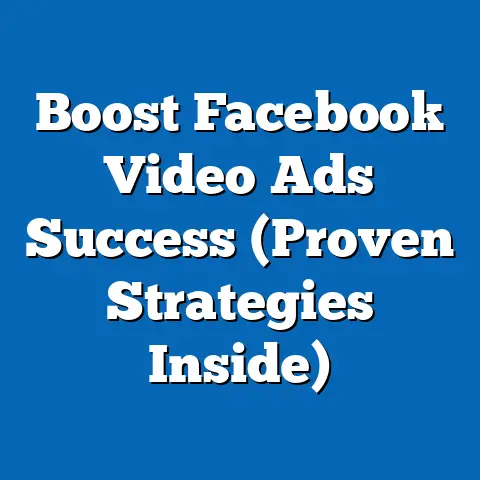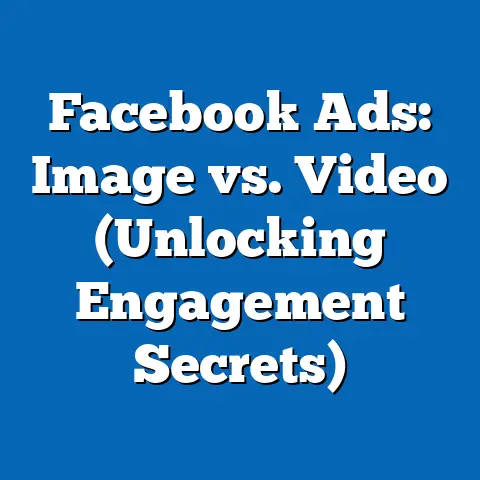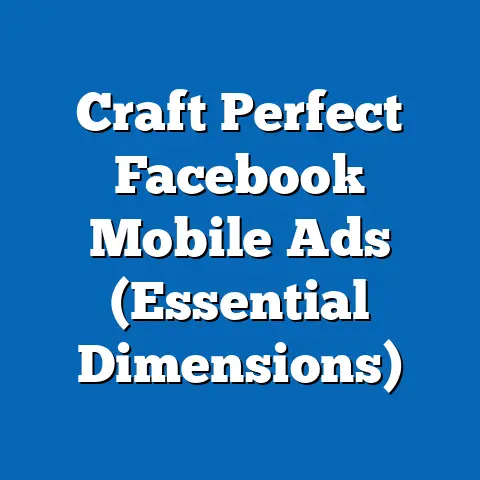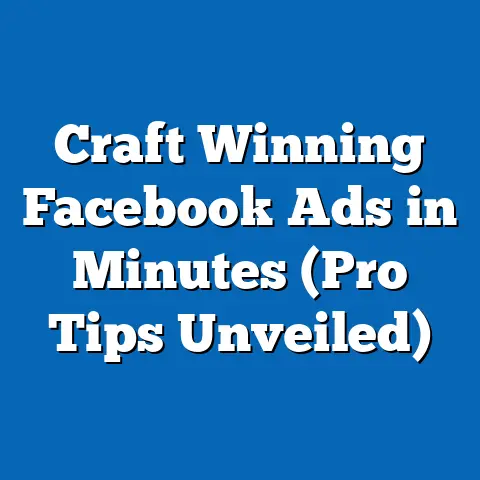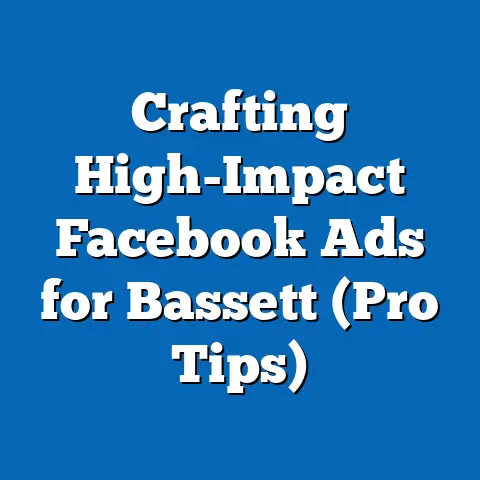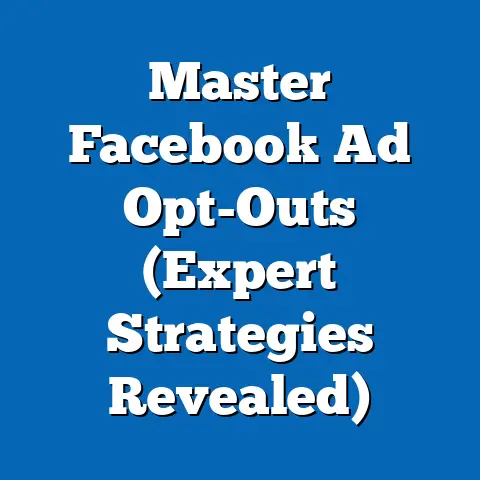Master Frequency Control in Facebook Ads (Proven Strategies)
“Since we started focusing on frequency control in our Facebook ads, our customer engagement skyrocketed, and our ROI doubled!” – That’s what Sarah, the marketing director at a booming e-commerce startup, told me last week. And honestly, her success story isn’t unique. I’ve seen firsthand how mastering ad frequency can be a game-changer in the Facebook advertising world.
Frequency control is essentially the art of showing your ads to the right people, the right number of times. Too few impressions, and your message might not stick. Too many, and you risk annoying your audience, leading to ad fatigue and wasted budget. It’s a balancing act, but one that’s absolutely critical for maximizing the reach and performance of your Facebook ad campaigns. This guide will walk you through the science and art of frequency control, giving you the tools and strategies to make your ads resonate, not irritate.
Understanding Frequency in Facebook Ads
Let’s start with the basics. In Facebook advertising, frequency refers to the average number of times a user has seen your ad. It’s calculated by dividing the total number of impressions by the unique reach of your campaign. For example, if your ad has 10,000 impressions and reached 2,000 unique users, your frequency is 5. This means, on average, each user saw your ad five times.
But why does frequency matter? Well, it’s all about finding that sweet spot. Show your ad too infrequently, and potential customers might not remember your brand or message. Show it too often, and you run the risk of ad fatigue. Ad fatigue happens when users get tired of seeing the same ad repeatedly, leading to decreased engagement, lower click-through rates (CTR), and ultimately, reduced conversion rates. I’ve seen campaigns with a frequency above 7 or 8 experience a significant drop in performance, even if the initial results were promising.
The ideal frequency range varies depending on your campaign objectives. For brand awareness campaigns, a higher frequency might be acceptable, as the goal is simply to get your brand in front of as many eyes as possible. However, for lead generation or conversion campaigns, a lower frequency is often more effective. You want to remind users of your offer without overwhelming them.
Think of it like this: if you’re introducing yourself to someone, you wouldn’t want to shout your name at them repeatedly. Instead, you’d aim for a memorable first impression, followed by occasional reminders of who you are and what you offer. The same principle applies to Facebook ads.
Key Takeaway: Frequency is a crucial metric in Facebook advertising that measures how many times a user sees your ad. Finding the right frequency range is essential to avoid ad fatigue and maximize campaign performance.
The Science Behind Frequency Control
The impact of ad frequency on consumer behavior isn’t just guesswork. It’s rooted in psychology and marketing research. One key concept is the mere-exposure effect, which suggests that people tend to develop a preference for things simply because they are familiar with them. This is why a certain level of frequency can be beneficial, especially for building brand recognition.
However, the mere-exposure effect has its limits. Beyond a certain point, repeated exposure can lead to annoyance and negative associations. This is where the concept of wear-out comes into play. Wear-out occurs when an ad loses its effectiveness due to overexposure, resulting in decreased engagement and potentially negative brand perception.
So, how do you strike the right balance? Unfortunately, there’s no one-size-fits-all answer. The optimal frequency depends on several factors, including your target audience, ad creative, campaign objectives, and the overall context of the ad.
Studies have shown that a frequency of 3-5 within a week is often a good starting point for most campaigns. However, this is just a guideline. I’ve found that some audiences respond well to higher frequencies, while others are more sensitive. For example, a highly targeted retargeting campaign might benefit from a slightly higher frequency, as users have already shown interest in your product or service. On the other hand, a broad awareness campaign targeting a cold audience might require a lower frequency to avoid overwhelming them.
The relationship between frequency and other KPIs is also crucial to understand. As frequency increases, you might see a decrease in CTR, conversion rates, and overall engagement. This is a sign that ad fatigue is setting in. Monitoring these metrics closely will help you identify the optimal frequency for your specific campaign.
Key Takeaway: Understanding the psychology behind ad frequency and its relationship with other KPIs is essential for effective frequency control. While general guidelines exist, the optimal frequency varies depending on your audience, ad creative, and campaign objectives.
Proven Strategies for Effective Frequency Control
Now that we understand the importance of frequency control, let’s dive into some proven strategies you can implement in your Facebook ad campaigns.
Strategy 1: Audience Segmentation
One of the most effective ways to control frequency is through audience segmentation. By dividing your audience into smaller, more targeted groups, you can tailor your frequency settings to each segment’s specific needs and preferences.
For example, you might segment your audience based on demographics, interests, behaviors, or website activity. A user who has visited your website multiple times might be more receptive to a higher frequency of retargeting ads than someone who has never heard of your brand.
I often use custom audiences and lookalike audiences to segment my target market. Custom audiences allow you to target users who have interacted with your business in some way, such as website visitors, email subscribers, or app users. Lookalike audiences allow you to reach new users who share similar characteristics with your existing customers.
By segmenting your audience and tailoring your frequency settings, you can ensure that your ads are reaching the right people, the right number of times.
Strategy 2: Creative Rotation
Another effective strategy for controlling frequency is creative rotation. Instead of showing the same ad over and over again, you can rotate multiple ad creatives to keep your audience engaged and prevent ad fatigue.
Creative rotation involves creating multiple versions of your ad with different visuals, headlines, and copy. This keeps your ads fresh and interesting, even if users see them multiple times.
I recommend creating at least 3-5 different ad creatives for each campaign. This gives you enough variety to rotate your ads and prevent ad fatigue. You can also use Facebook’s dynamic creative feature to automatically optimize your ad creatives based on performance.
To efficiently rotate ad creatives, I use a spreadsheet to track which ads are running and how they are performing. I regularly update the spreadsheet with new ad creatives and remove underperforming ads. This ensures that my audience is always seeing fresh and engaging content.
Strategy 3: Frequency Cap Settings
Facebook Ads Manager provides built-in frequency cap settings that allow you to limit the number of times a user sees your ad within a specific timeframe. This is a simple yet powerful way to control frequency and prevent ad fatigue.
To set frequency caps, go to the ad set level in Ads Manager and scroll down to the “Optimization & Delivery” section. Here, you can set a frequency cap for your ad.
You can choose from several options, such as limiting the number of times a user sees your ad per day, per week, or per month. The optimal frequency cap will depend on your campaign objectives and target audience.
I typically start with a frequency cap of 3-5 impressions per week for most campaigns. However, I adjust this based on performance. If I see that CTR and conversion rates are declining, I might lower the frequency cap to prevent ad fatigue.
Strategy 4: A/B Testing
A/B testing is a powerful tool for finding the optimal frequency for your specific audience and campaign. By testing different frequency levels, you can identify the point at which ad fatigue sets in and adjust your frequency settings accordingly.
To A/B test frequency, create two identical ad sets with different frequency caps. For example, one ad set might have a frequency cap of 3 impressions per week, while the other has a frequency cap of 5 impressions per week.
Run both ad sets for a sufficient period of time (at least a week) and track the performance of each. Pay close attention to metrics like CTR, conversion rates, and cost per acquisition (CPA).
Analyze the results to determine which frequency level performed better. If the ad set with the lower frequency cap had a higher CTR and conversion rate, it’s a sign that ad fatigue is setting in at the higher frequency level.
I use A/B testing to continuously refine my frequency strategies and ensure that I’m reaching my audience the right number of times.
Strategy 5: Retargeting and Lookalike Audiences
Retargeting and lookalike audiences can be powerful tools for managing frequency without overwhelming users. Retargeting allows you to show ads to users who have already interacted with your business, such as website visitors or email subscribers. Lookalike audiences allow you to reach new users who share similar characteristics with your existing customers.
Because these audiences are already familiar with your brand, you can often get away with a slightly higher frequency without causing ad fatigue. However, it’s still important to monitor performance and adjust your frequency settings accordingly.
I often use retargeting ads to show users who have abandoned their shopping carts a reminder of the items they left behind. Because these users have already shown a strong interest in my products, I can often get away with a higher frequency without overwhelming them.
Key Takeaway: Effective frequency control involves a combination of strategies, including audience segmentation, creative rotation, frequency cap settings, A/B testing, and the use of retargeting and lookalike audiences. By implementing these strategies, you can ensure that your ads are reaching the right people, the right number of times, without causing ad fatigue.
Monitoring and Adjusting Frequency Control
Frequency control isn’t a set-it-and-forget-it strategy. It requires ongoing monitoring and adjustment to ensure that your ads are performing optimally.
Pay close attention to the relationship between frequency and other key metrics. If you see that CTR and conversion rates are declining as frequency increases, it’s a sign that ad fatigue is setting in. In this case, you should lower your frequency cap or rotate your ad creatives.
It’s also important to be agile and responsive to performance metrics. The optimal frequency can change over time, so you need to be prepared to adjust your frequency settings based on real-time data.
I recommend checking your Ads Insights data at least once a week to monitor frequency and make any necessary adjustments. This will help you stay ahead of ad fatigue and maximize the performance of your Facebook ad campaigns.
Key Takeaway: Ongoing monitoring and adjustment are essential for effective frequency control. Use Facebook Ads Insights to track frequency and other key metrics, and be prepared to adjust your frequency settings based on real-time data.
Conclusion
Mastering frequency control in Facebook ads is a critical component of successful advertising strategies. By understanding the importance of frequency, implementing proven strategies, and continuously monitoring and adjusting your settings, you can improve engagement, reduce ad fatigue, and ultimately, achieve a higher ROI.
Don’t let your ads become a source of annoyance for your target audience. Take action today and start applying these strategies to your own Facebook ad campaigns. You might be surprised at the positive impact it has on your results. I know I was when I first started paying attention to frequency, and I’m confident you’ll see similar success!

